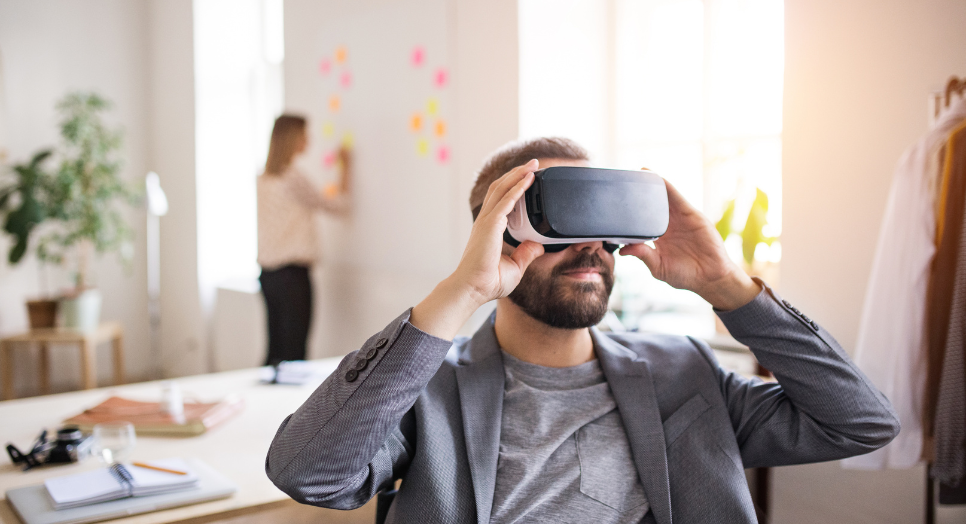Music Licensing for Virtual Reality

In the rapidly evolving landscape of virtual reality (VR/AR/XR), the sensory experience is paramount. While visual and tactile elements have made significant strides, a crucial component often remains an afterthought—music.
Harnessing the potential of VR technology, the fitness industry is creating innovative and engaging workout experiences that get your heart racing and transform exercise into a genuinely enjoyable activity. And at the heart of this transformation is the clever integration of music.
Music is not just an add-on; it's a vital piece of the puzzle that completes the immersive experience. As businesses and brands venture into these uncharted digital terrains, it's essential to recognize that a VR music strategy should be a primary consideration, not a last-minute addition. This recognition is crucial not only for enhancing the VR user experience but also for navigating the complex world of music licensing for virtual reality.
Vickie Nauman, the founder of CrossBorderWorks music tech consultancy, offers valuable insight into music licensing for virtual reality.
When new technologies emerge, such as virtual reality (VR/AR/XR), virtual worlds or metaverse, and even some types of games, it can often create further unknowns in the already-confusing world of music licensing. If you want to pursue integrating music into one of these new technologies, some of the same rules apply—you have to consider music rights for using the sound recording, the underlying composition, and any public performance of the song.
It’s important to know that these rights can be implicated differently in each platform, as well as your own app or experience. Although music licensing for virtual reality isn’t always straightforward, it is definitely possible! Many artists and labels are particularly interested in these new immersive experiences, and resources are available to make it happen. So, I encourage everyone to add music, as it will enrich whatever you are building. The process I go through with companies looking to license music for virtual reality is to review the following, which will indicate what rights you will need:
- Curation — what type of music do you need? Games and virtual worlds usually have distinct communities and audiences, and you need to ensure the music you choose works with those users. Since experience comes first, this is the place to start.
- Functionality — is the music playing in the background, or is it integrated and embedded into the video or gameplay?
- App Type — are you building something standalone, or is it on top of a gaming engine, platform, or ecosystem?
- Territory — is your app going to be launched in a particular country or globally?
- Music delivery — where is your music hosted and delivered? In the cloud or the app?
Once I know the answers to these five questions, I can better help you understand exactly how to license the music that will enhance your app or game.
Vickie NaumanFounder of CrossBorderWorks music tech consultancy |
 |
As Vickie Nauman's insights highlight, understanding the specific needs of your VR project – be it the type of music, its functionality, app type, territorial reach, or delivery method – is key to successfully licensing and integrating music into your virtual reality experience.
So, as you embark on this exciting journey into music licensing for virtual reality, whether you're developing games, exploring the metaverse, or creating standalone VR experiences, remember: a VR music strategy isn't just the finishing touch, it's a fundamental part of your virtual world and vital for crafting a truly immersive and captivating experience.
Learn how to streamline your music integration to capture users' attention and drive engagement by reading our complete guide to music licensing.


 2 min
2 min